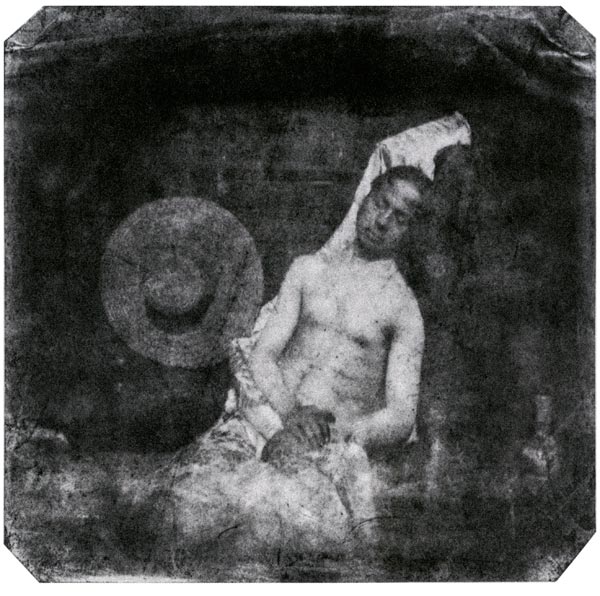 |
| Hippolyte Bayard, Le Noyé (Self-portrait as a drowned man), 1840 © SFP https://sfp.asso.fr/en/ |
What story is it telling?
From Aperture: Simon Baker - Performative Work
Perhaps the earliest of these [performative works] coincided with the 1839 advent of the medium: Hippolyte Bayard produced Le Noyé (Self-portrait as a drowned man) in October 1840. A direct positive print on paper (and therefore an easier and cheaper alternative to the metal daguerreotype), Bayard’s self-portrait is not only a technical masterpiece but a conceptual one. It shows the inventor of the process, slumped as though sleeping, naked from the waist up, like Jacques-Louis David’s 1793 painting of the assassinated Marat; Bayard’s strangely dark hands a testament to both chemistry and hard work, crossed in peaceful resignation on his lap. But it is the title that completes the work, referring the viewer (whomever Bayard imagined that might have been) to the hopeless plight of the sitter: Bayard claimed to have invented photography before Daguerre, who received all the credit for the invention. In the photograph, he appears rejected, ignored, sinking without a trace below the high watermark of Daguerre’s fame and fortune. Bayard’s silent protest is probably the earliest, and certainly the greatest, of the first real performances made purely for the camera, and existing only as a photographic print.
From The Nonist: The Narrative on the back of the photograph
On the back, written in third person, is Hippolyte’s suicide note in which states his grievance rather explicitly.
Quote: “The corpse which you see here is that of M. Bayard, inventor of the process that has just been shown to you. As far as I know this indefatigable experimenter has been occupied for about three years with his discovery. The Government, which has been only too generous to Monsieur Daguerre, has said it can do nothing for Monsieur Bayard, and the poor wretch has drowned himself. Oh the vagaries of human life…! He has been at the morgue for several days, and no-one has recognized or claimed him. Ladies and gentlemen, you’d better pass along for fear of offending your sense of smell, for as you can observe, the face and hands of the gentleman are beginning to decay.”
No comments:
Post a Comment